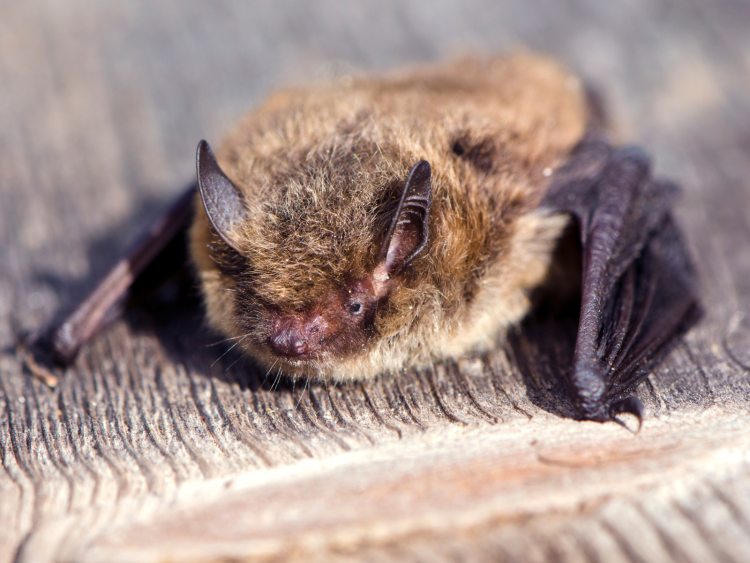Large-scale challenges when small-scale guests interrupt project at Cranfield University
About the project
How matchbox-sized bats temporarily interrupted a decarbonisation project
An ambitious decarbonisation project at Cranfield University overcame a particularly difficult challenge when contractors found protected bats roosting within the building walls.
The Bedfordshire-based site was conducting a project of work which focused on low-carbon upgrades at two historic, World War II hangars.
Originally built for the Royal Air Force, the buildings are now used by the postgraduate-only institution for research and maintenance purposes.
Contractors first identified the bats when using a cherry picker to access higher areas of the building. The discovery hindered project deadlines and resulted in an immediate pause on all scheduled works.
Despite the delays, the university’s commitment to conservation meant they approached the encounter as a chance to come up with some ingenious solutions.
Head of development and projects at Cranfield University, Tracy Flynn said: “As soon as we were informed of the discovery, all works came to a halt.
“We sought advice from an expert in the field of ecology to see what their recommendations would be before we made any decisions on how we could next progress.”
As soon as we were informed of the discovery, all works came to a halt.
We sought advice from an expert in the field of ecology to see what their recommendations would be before we made any decisions on how we could next progress
The project, which focused on replacing old boilers with low-emission heat pumps and energy efficiency measures including insulation and renewable energy generation, is a part of the university’s ambitions to reach net zero by 2030.
The £11,446,353 works were awarded £11,279,371 under Phase 3a of the Public Sector Decarbonisation Scheme. Funding was delivered by Salix on behalf of the Department for Energy Security and Net Zero.
Back to the bats
The protected animals had made their home in the wall cavity between the exterior and interior brickwork. And although well-known in other areas of the campus, the brown long-eared bats and pipistrelle bats had never before been seen in these historic buildings.
After heavy consultation with experts, including Applied Ecology consultant Duncan Painter, a decision was made to continue works with a five-metre exclusion zone around where the bats had been seen.
The zone ensured minimal disruptions to their habitat, and guaranteed any works close by were done with minimal disruption and noise.
Tracy added: “By revising our schedule, as well as working closely with our contractors and ecology experts, we were able to continue our work whilst ensuring there would be no disruption to the bats’ chosen home.
“Our approach exemplifies the university’s commitment for a bio-diverse campus, and the importance of resilience in overcoming unforeseen challenges.”
By revising our schedule, as well as working closely with our contractors and ecology experts, we were able to continue our work whilst ensuring there would be no disruption to the bats’ chosen home.
Our approach exemplifies the university’s commitment for a bio-diverse campus, and the importance of resilience in overcoming unforeseen challenges.
Additionally, a one-way door system has been introduced near the area which expert believe the bats are using to access the wall cavity.
Three bat boxes were also installed nearby to act as alternative homes when their hibernation comes to an end, and they leave the walls in the spring.
Although there was no evidence of bats roosting in the second hangar, bat boxes have also been introduced in the case any species come searching for a home.
Aptly named, brown long-eared bats are a medium-sized bat with greyish-brown fur and characteristically large ears – nearly as long as their body.
Pipistrelle bats are the UK’s smallest and most common bat. They have dark, golden-brown fur, a slightly paler underside, and a dark mask around their fact. The matchbox-sized bats usually roost in tree holes, bat boxes, as well as in the roof spaces of houses, often in small colonies.
All UK bat species are protected by various pieces of European and UK legislation, and it is a punishable offence to both disturb bats when they are roosting and to obstruct, damage or destroy the places where bats live.
Hard work and perseverance mean the project is nearing completion, with all works back on track to finish by 31 March 2024.
Did you know? Interesting facts about bats
- All UK bat species use echolocation (a technique where the location of objects is determined using reflected sound) to navigate and hunt for insects in the dark
- Bats are the only true flying mammals in the world
- A bat as small as a pipistrelle can eat up to 3,000 insects at night
- Bats are more closely related to humans than they are to mice
- Bats usually only have one baby a year and can live for up to 30 years

The common pipistrelle bat (Pipistrellus pipistrellus)


